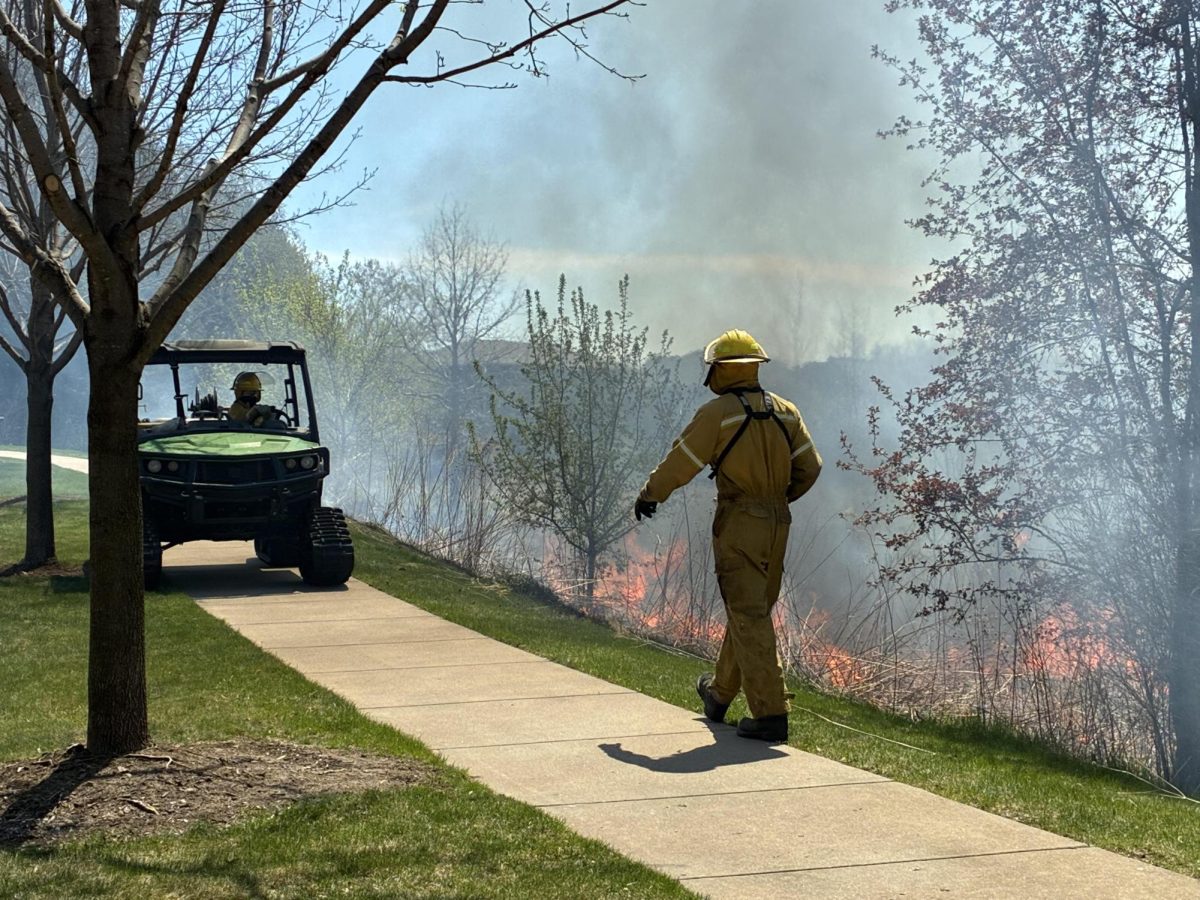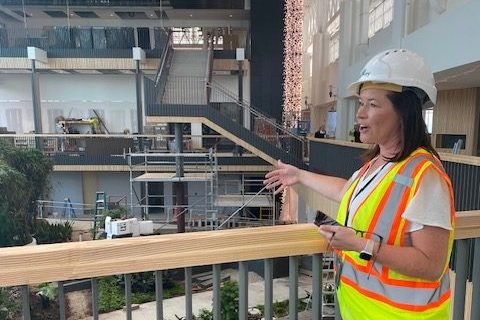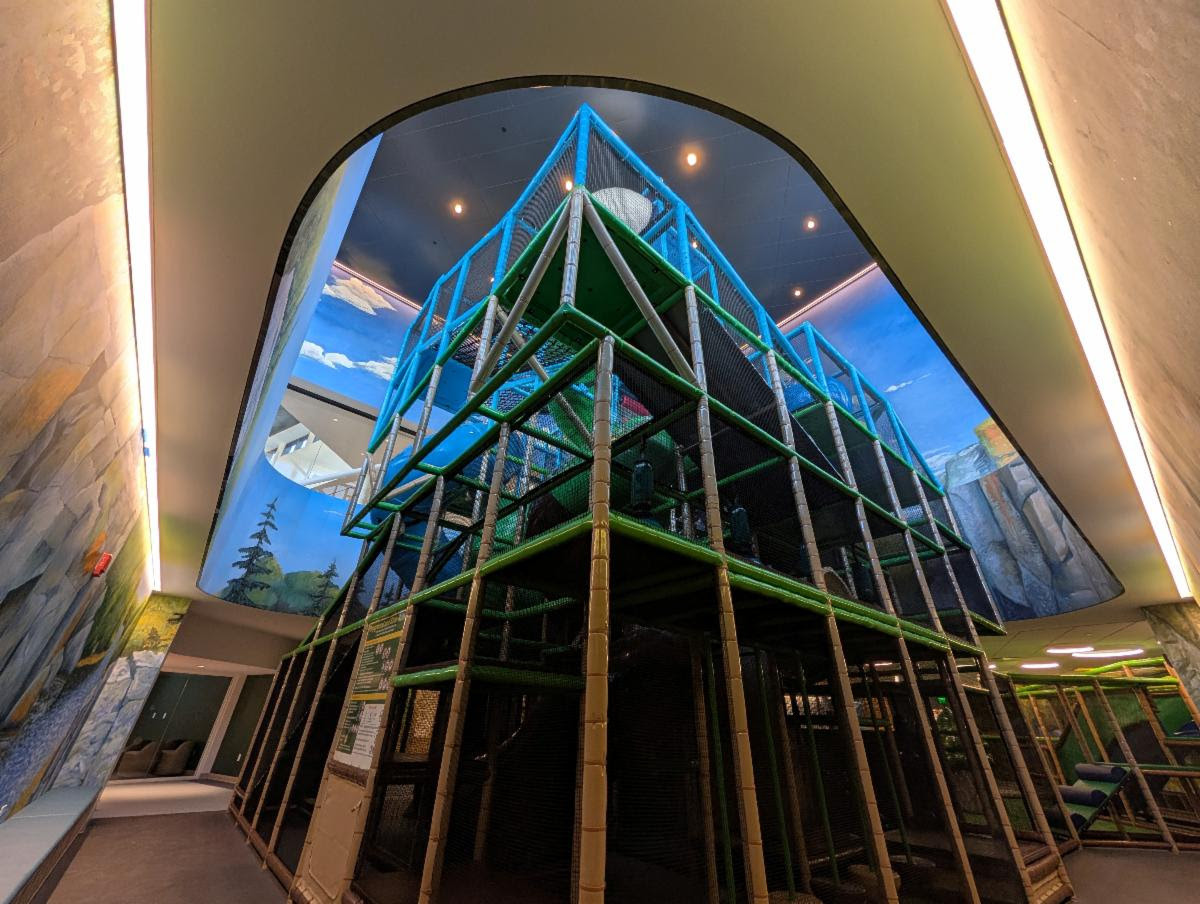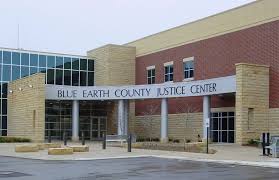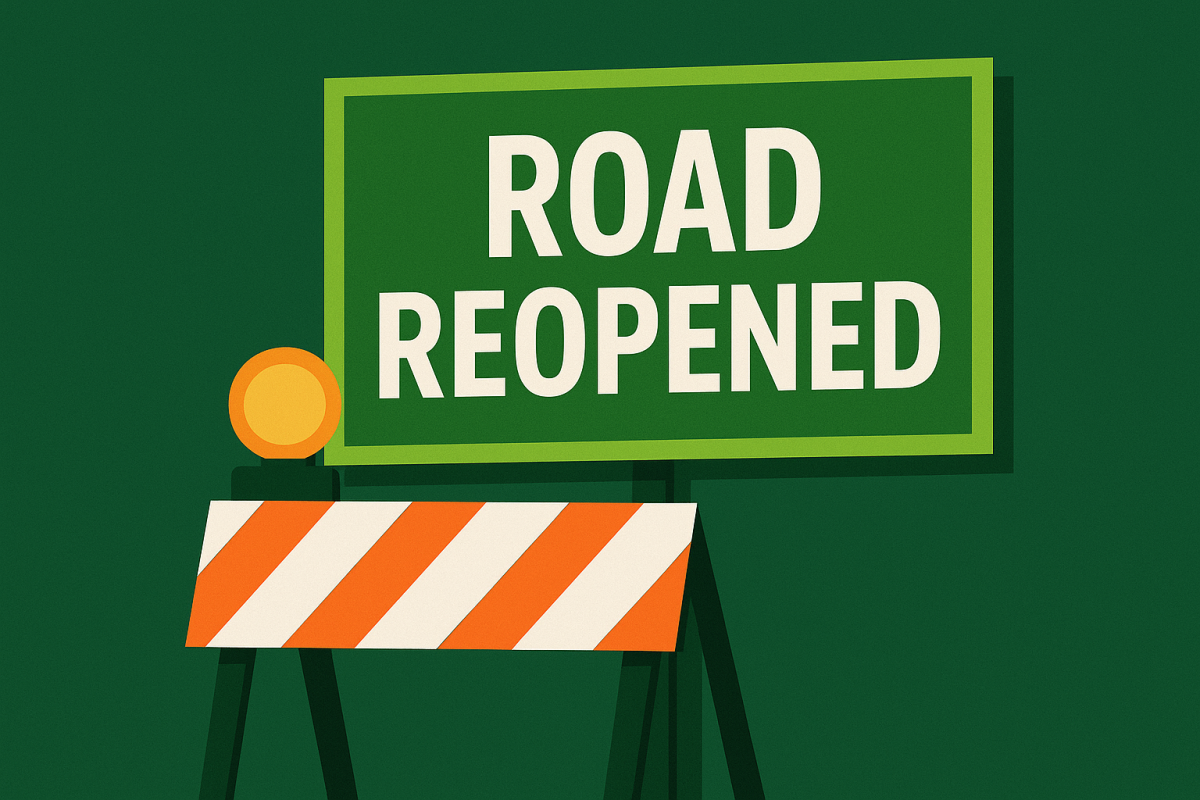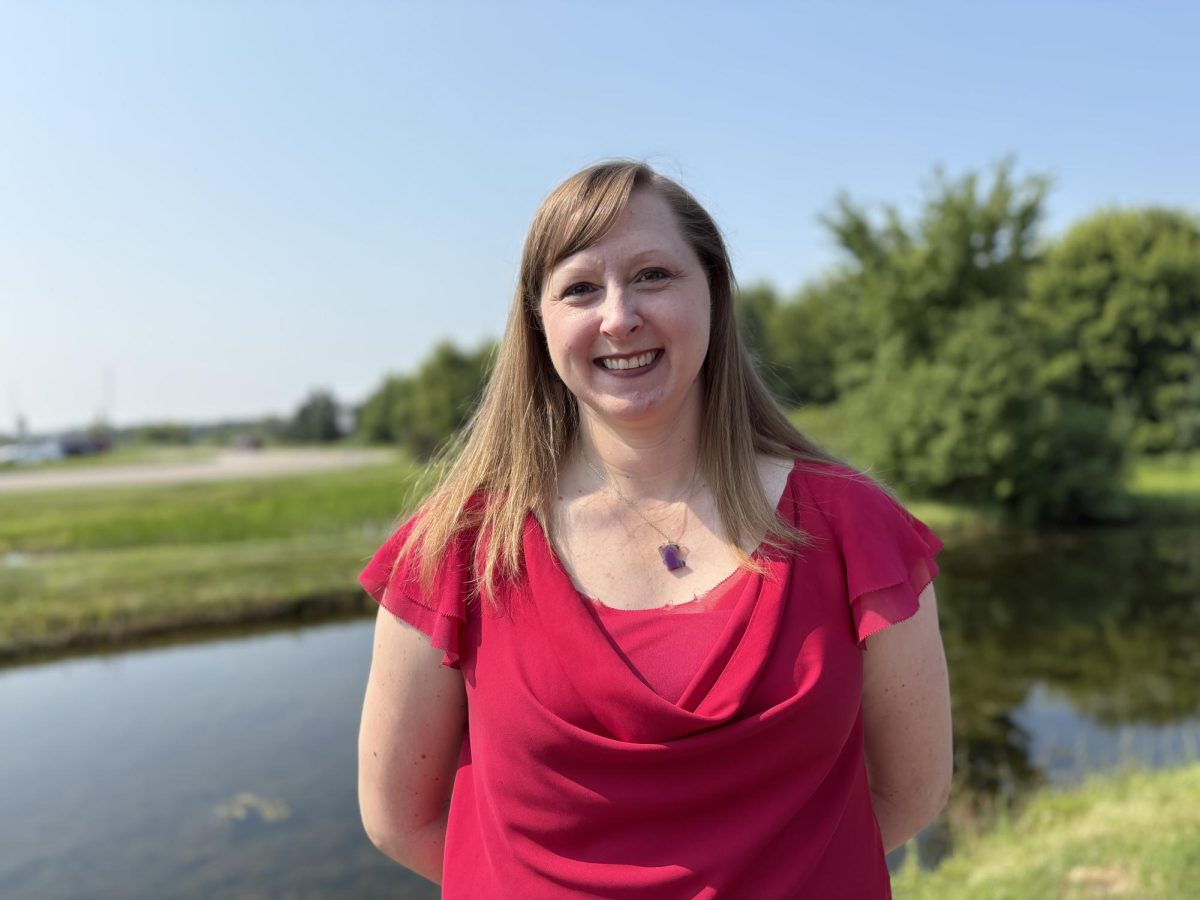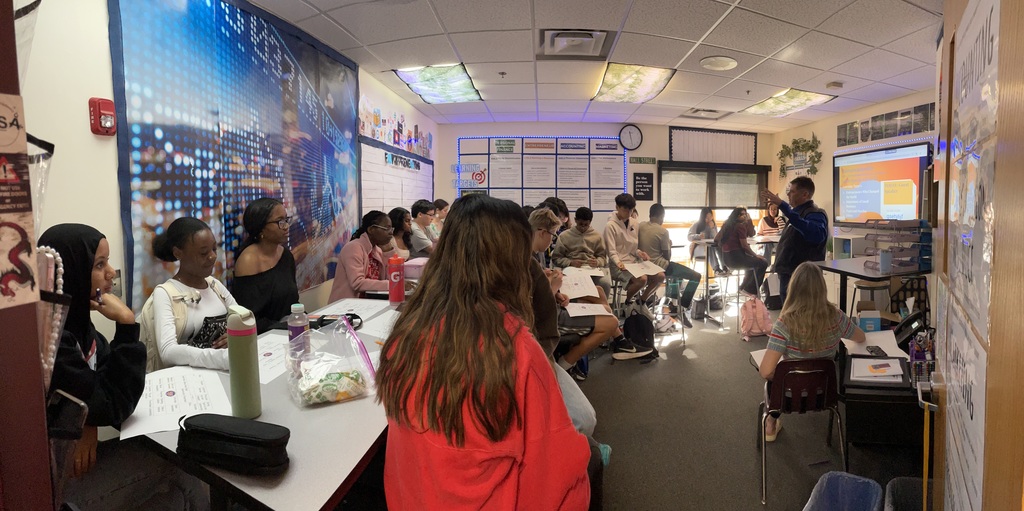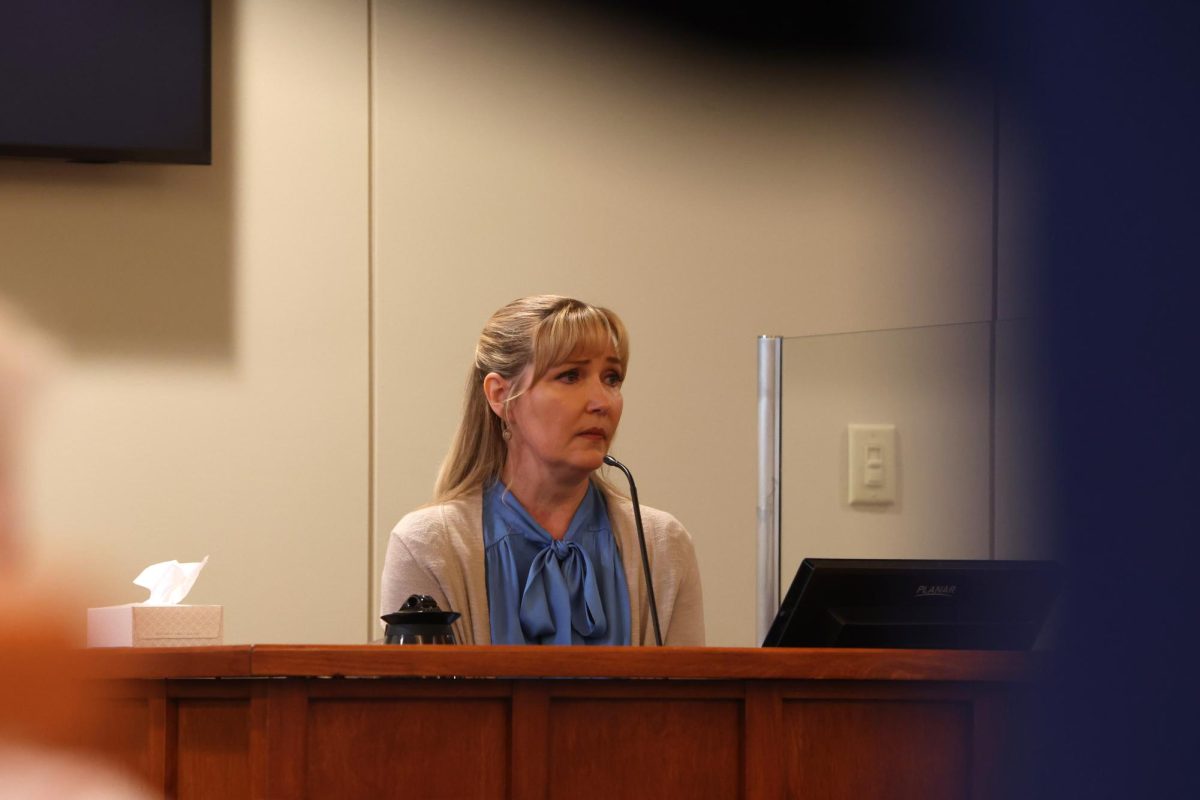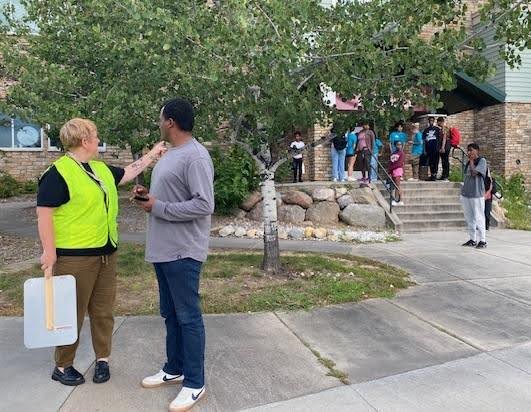WOODBURY, MN (WNN) – Tom Kohm aimed his torch at a patch of dried prairie and within seconds flames leapt five feet in the air and began rolling up the hillside toward the walking path along Hawthorn Trail on Woodbury’s west side.
The flames died almost as quickly as they started when they reached a line of charred ground, a fire break, that Kohm and his partner Ella Stone had made earlier, just below the green grass along the walking path.
“That’s about all it takes, just remove the fuel and the fire stops,” Kohm said.
Despite the plumes of white smoke drifting through the Bailey’s Arbor Park neighborhood Tuesday, the fashionable homes across the street were never in danger. That’s because the pair were not crazy kids playing with fire, but part of a crew of 10 trained professionals with Resource Environmental Solutions (RES) conducting a prescribed burn of about 35 acres of restored prairie at the sprawling Bailey’s Arbor Park. The previous Wednesday crews burned areas of Valley Creek Park, near the intersection of Valley Creek and Settlers’ Ridge.
RES is an environmental mitigation company contracted with the city to restore and manage prairie, savannah, and woodlands in the city’s parks and natural areas, and along waterways and larger stormwater basins.
Purpose of Prescribed Burns
Prescribed burns are an important part of the management plan. Areas that have been planted to prairie, or are remnant prairie, need to be burned about every three to five years to maintain optimum health, explained Eric Glaser, restoration manager for RES and the crew chief on Tuesday.
In fact, most of the crew doing the burn at Bailey’s Arbor Tuesday had helped plant the same area several years before. Besides reducing invasive species, fire helps certain native species of prairie and woods to rejuvenate as well as maintaining soil health according to Glaser.
Like Tuesday, when recent rains and gentle winds afforded ideal conditions, burns are typically done in the spring, between mid-April and mid-May. “The idea is to get a head start on the growth of invasive species,” said Heidi Quinn, environmental resource specialist for the City of Woodbury.
This Year’s Prescribed Burns
Valley Creek Park and Bailey’s Arbor Park were the two large sites on the docket for this year’s prescribed burn program. Also on Tuesday, burns were conducted in an area adjacent to the city impound lot, and the prairie area in north Prairie Ridge Park. Several smaller sites, like stormwater ponds, are also on the list for this year’s prescribed burn program, although exactly which ones and when will depend a lot on weather and other factors, Quinn said. In all, just under 117 acres will get the treatment this year.
Prescribed burns, and the natural areas they serve, are a key part of the city’s overall environmental stewardship and sustainable development strategy. Burns have multiple, layered environmental and economic benefits, Quinn explained.
Fire removes invasive species and promotes the growth of native vegetation, which in turn improves habitat for important wildlife, such as pollinators, as well as overall forest and prairie health. Those, in turn, provide welcoming parks and natural areas for residents. Prescribed burns are also a cost-effective way to control weed growth, rather than using chemicals, which can have harmful impacts on wildlife and water quality.
In fact, the primary purpose of prairie management, with the necessary periodic burns, is to improve and maintain water quality in sensitive areas. The burns restore or reintroduce native vegetation, which tends to hold soil better than invasive species or weed growth which better filters the rainwater that falls on the land entering groundwater or flowing to nearby streams and creeks. Native wildlife attracted to the areas also promote water quality, according to environmental scientists.
Similarly, stormwater ponds have native vegetation buffers to promote the infiltration and filtration of stormwater before entering the pond, which improves water quality. The city uses prescribed burning as a management strategy for the native vegetation buffers.
Prescribed burns offer economic and natural resource benefits by promoting land management that requires less water to maintain, Quinn said. “Native species are more drought and heat tolerant than many invasive species that like to be watered more regularly,” she said.
Notice to Residents
Notice of impending burns is usually provided to residents through city social media channels, website and news releases, unless a restoration project is in its first year and there’s a populous area nearby. In that case, letters may be sent to residents in the immediate area.
More information on prescribed burns, including a video of how they are conducted, can be found on the city’s website.

